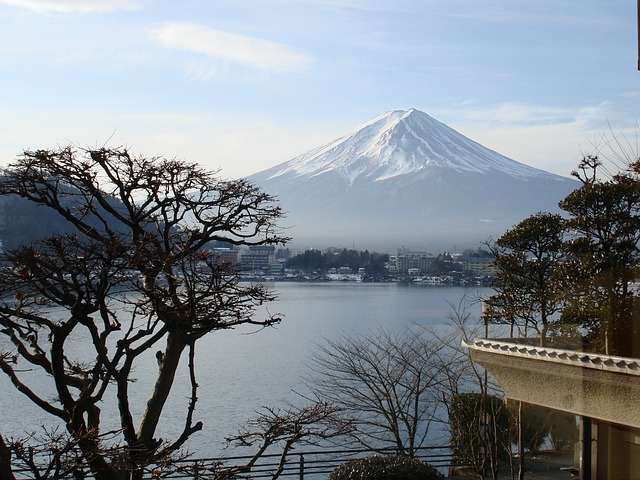5 Picturesque Japanese Mountains to See With Your Own Eyes
About 70% of Japan is made of mountains. Yes! You can imagine the lots of options you can select from for your hiking and mountaineering experience on your next visit to the country. Most Japan tours would offer you visits to the mountains as part of their packages. In this article, we have identified and compiled a list of 5 picturesque japanese mountains. They are indeed the best mountains for viewing, picture taking, and hiking. Follow closely…
Mount Fuji
Standing at 3,776.24 meters, Mount Fuji is the highest mountain in Japan. Also called Fugaku, this mountain is located between the Yamanashi and Shizuoka mountains on Honshu Island; it is also the seventh-highest peak of an island on the entire planet.
Aside from its magnificent height, the view of the mountain attracts a lot of travelers. It has a nice conical shape and a snowy peak to complement its colors. This beautiful setup makes pictures taken on the mountain iconic, and memories made there become naturally beautiful.
Mount Fuji has a lot of cultural significance to the people of Japan, such that it is regarded as a sacred symbol in the country. Asides from visitors interested in hiking, thousands of Japanese climb the mountain to visit the shrine at its peak every summer.
Mount Asama
As high as 2,568 meters, Mount Asama is an active volcano. It is actually the most active one in Honshu, and if you are visiting, you should read up on new information about the volcano before you visit. The mountain has erupted 121 times, but it hasn’t had any such activity since the last occurrence on the 7th of August, 2019.
Mount Asama is located in Honshu, the main island of Japan, on the border of Gunma and Nagano. When visitors come to see the mountain, since it is an active volcano, there is a protected area that helps keep people off from the dangerous regions, so you can enjoy the beautiful sight and still be safe. The protected area is the highest part of the mountain, so you can’t go too close to the top and harm yourself.
While hiking, you get a superb view of the Northern Japan Alps from this mountain.
Mount Kita
Kita is the next highest mountain after Mount Fuji in Japan, and it is commonly referred to by the title “Leader of the Southern Alps” because it forms part of the Akaishi Mountains, also known as the Southern Alps.
This mountain is 3,193 meters tall, and it forms a shape of a triangular pyramid when you look from the north or the south. Many hikers choose this mountain because of its height and the amazing sight it offers. You even get to select the path to follow while climbing. You can select rocky ridges, snowy valleys, or other options when choosing the route to follow to reach the summit.
Mount Yari
Aside being one of the most popular Japanese mountains, Mount Yari is also widely known for its pointed rock peak. Yari forms part of the Hida mountains, also referred to as the Northern Alps of Japan.
This mountain also has cultural significance because this was where priest Banryu, also known as the first to climb the mountain, founded a temple. The Azusa river also begins here.
Mount Yari is 3,180m in height. The experience of being at the tip of the pointed peak of this mountain makes it a huge attraction to many hikers from within and outside Japan. It is also noteworthy that this is the fifth-highest elevation in the country and one of the 100 famous Japanese mountains.
Mount Haku
Mount Haku, also referred to as Hakusan, is one of the Three Holy Mountains in Japan; the other two are Mount Tate and Mount Fuji. It is located on the borders of the Fukui, Gifu, and Ishikawa mountains.
This mountain is a dormant composite volcano, this is why its most recent eruption was as far back as 1659. Its height is 2,702m, and it is regarded as having three peaks, although some hikers count them as five. There are multiple routes to select from when climbing Mount Haku. All routes are packed with signs and maps, so whichever way you choose to go, it will be difficult to get lost while heading to the summit or returning down.
The best time to visit if you are interested in climbing this mountain is in the summer, between June and October. This is the official hiking season for this mountain, as defined by the Hakusan National Park.
Concluding Thoughts
Japanese mountains are a great place to spend the holidays, they are great for sightseeing and hiking. Since there are so many of them, travelers could have a difficult time selecting which one will give them the best experience.
This is why we have put together a selection of some of the best picks for you to choose from. Pick your favorites and do deeper research on them, so whenever you are ready, you will have planned the best experience for yourself before you even book a flight.
If you’d like to experience living, teaching and traveling through Japan, check out our Japan Placements which are free for graduates of myTEFL’s 120 and 140 hour online courses.
*This is a guest post submitted on November 24, 2022

